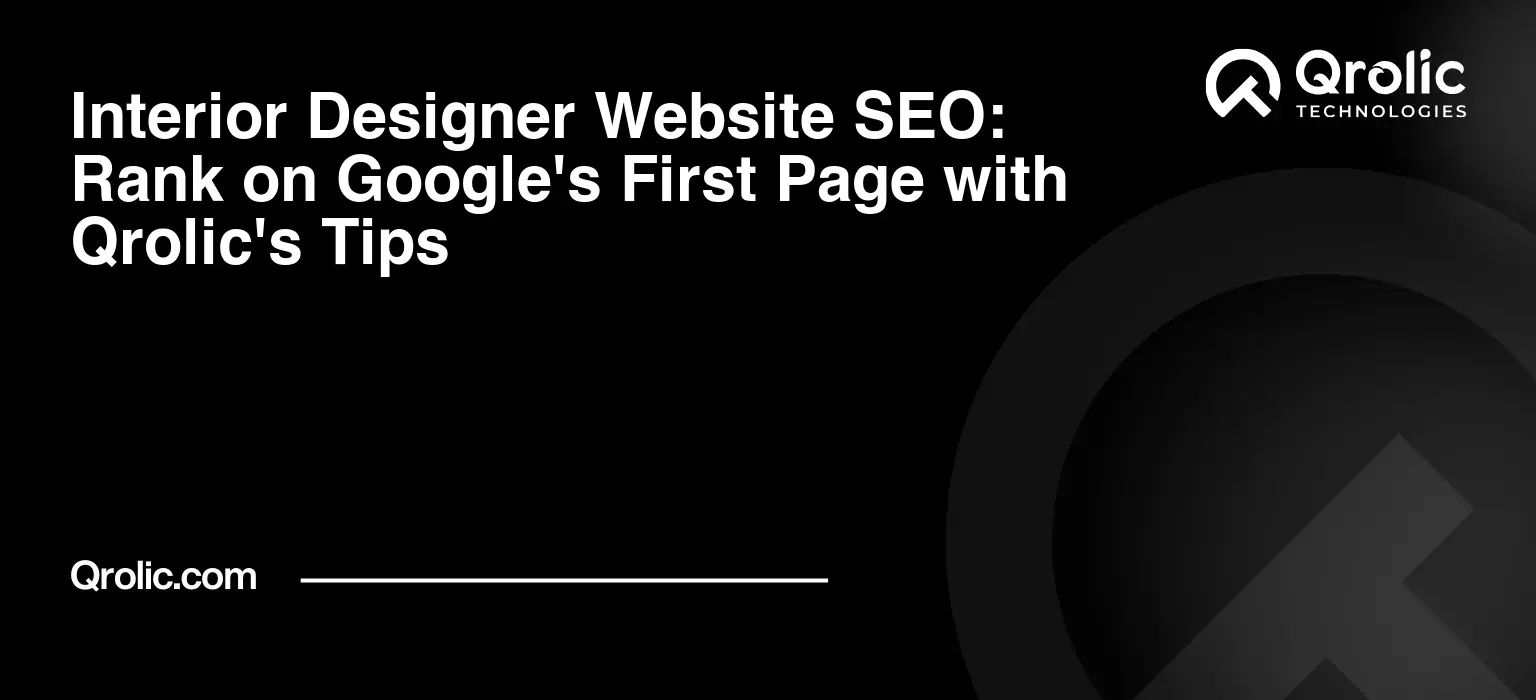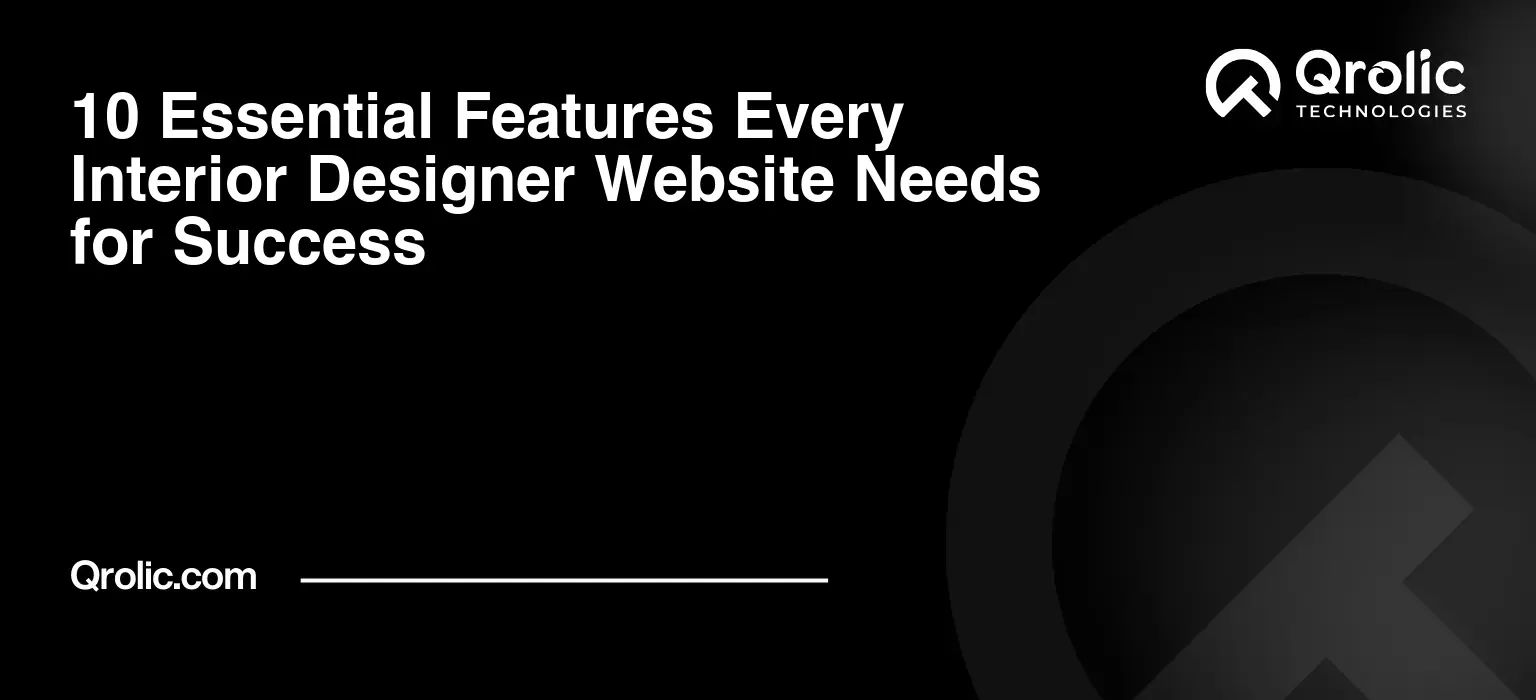The Foundation of Online Success: Why Interior Designer Website SEO Matters More Than Ever
In the vibrant world of interior design, where aesthetics and vision transform spaces, a beautiful online portfolio is just the beginning. To truly stand out, to connect with clients who are actively seeking your unique talent, your digital presence must be as meticulously crafted as your design projects. This is where interior designer website SEO steps in, acting as the invisible force that guides your ideal clients directly to your virtual doorstep. Ignoring it is like designing a masterpiece and then hiding it in a forgotten corner.
Quick Summary:
- Boost visibility with targeted keywords and quality content.
- Optimize your website’s speed and mobile experience.
- Build trust with local SEO and strong backlinks.
- Continuously track and adapt your SEO for success.
Table of Contents
- The Foundation of Online Success: Why Interior Designer Website SEO Matters More Than Ever
- What is SEO for Interior Designers?
- Why is SEO Crucial for Your Interior Design Business?
- When Should Interior Designers Start Focusing on SEO?
- The Evolving Landscape of Search Engines: Staying Ahead
- Laying the Digital Blueprint: Essential On-Page SEO for Interior Designers
- Keywords are Your Design Palette: Researching What Your Clients Search For
- Understanding User Intent: Navigational, Informational, Transactional, Commercial Investigation
- Tools for Keyword Research
- Long-Tail Keywords: Niche Gold for Interior Design
- Competitor Keyword Analysis
- Crafting Compelling Content: The Heart of Your Interior Design Website SEO
- Blog Posts: Your Storytelling Canvas
- Service Pages: Clearly Defining Your Expertise
- Portfolio Pages: Showcasing Your Masterpieces
- About Us/Contact Pages: Building Connection and Trust
- Optimizing Core Website Elements: Making Every Pixel Count
- Title Tags & Meta Descriptions: Your Digital Shop Window
- Header Tags (H1, H2, H3): Structuring Your Narrative
- Image Optimization: Beyond Just Beautiful Photos
- Internal Linking: Guiding Visitors Through Your Design Journey
- External Linking: Building Credibility
- Call-to-Actions (CTAs): Turning Browsers into Clients
- Beyond the Walls of Your Website: Off-Page SEO Strategies for Interior Designers
- Building Your Digital Reputation: The Power of Backlinks
- What are Backlinks and Why Do They Matter?
- Strategies for Earning High-Quality Backlinks
- Disavowing Bad Links
- Local SEO for Interior Designers: Dominating Your Geographical Area
- Google My Business (GMB): Your Local Hub
- Local Citations: Consistency is Key
- Local Keywords
- Social Media Signals: Amplifying Your Design Voice
- Online Reviews and Testimonials: Social Proof That Sells
- Encouraging Reviews
- Responding to Reviews
- The Technical Blueprint: Ensuring Your Interior Design Website SEO is Rock Solid
- Website Speed and Performance: A Seamless Experience
- Why Speed Matters
- Tools to Check Speed
- Optimization Techniques
- Mobile-Friendliness: Designing for Every Screen
- Responsive Design: A Must-Have
- Mobile-First Indexing
- Website Architecture and Navigation: Intuitive Pathways
- SSL Certificate (HTTPS): Security and Trust
- Schema Markup: Speaking Google’s Language
- Why Schema is Important for Interior Designers
- How to Implement Schema
- Measuring Success and Iterating: The Ongoing Journey of Interior Designer Website SEO
- Tracking Your Progress: Essential Tools
- Google Analytics: Understanding User Behavior
- Google Search Console: Insights from Google Itself
- Rank Tracking Tools
- Key Performance Indicators (KPIs) for Interior Designers
- The Iterative Process: Adapting and Evolving
- Qrolic Technologies: Your Partner in Digital Design Dominance
- Who is Qrolic?
- How Qrolic Helps Interior Designers Rank Higher
- Why Choose Qrolic?
- Services Offered Relevant to Interior Design SEO
- Future-Proofing Your Interior Designer Website SEO: Trends to Watch
- Voice Search Optimization
- Visual Search and AI
- User Experience (UX) as a Core Ranking Factor
- E-A-T (Expertise, Authoritativeness, Trustworthiness) in Interior Design
What is SEO for Interior Designers?
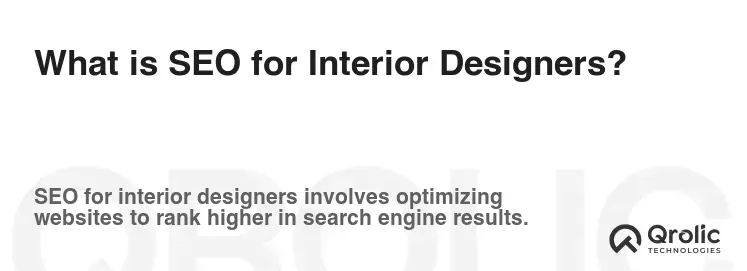
At its heart, Search Engine Optimization (SEO) for interior designers is the strategic process of enhancing your website’s visibility when people search for design-related services on search engines like Google. It’s about making your website comprehensible and appealing not just to human visitors, but also to the complex algorithms that crawl, index, and rank web pages. When potential clients type “luxury kitchen designer [your city],” “modern living room ideas,” or “best interior decorator for small apartments,” SEO ensures your website appears prominently among the search results.
It encompasses a broad spectrum of techniques, from the words you use on your pages to the technical architecture of your site, and even how other websites link to yours. The goal is simple yet profound: to establish your design firm as an authority, a trusted resource, and the go-to expert in your niche, making it effortlessly discoverable by those who need your expertise most.
Why is SEO Crucial for Your Interior Design Business?
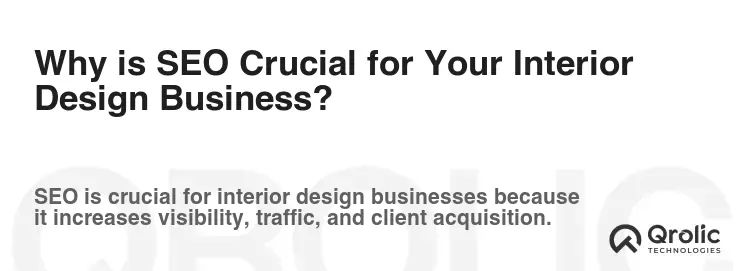
Many interior designers invest heavily in stunning visuals and high-end photography, which is undoubtedly essential. However, without a strong SEO strategy, these visual treasures might remain unseen. The benefits of prioritizing interior designer website SEO are manifold and profoundly impactful:
- Unparalleled Visibility: Imagine a bustling design market. Without SEO, your incredible showroom might be tucked away in a quiet alley. With SEO, it’s prominently displayed on the busiest avenue, right where everyone looks. Ranking on Google’s first page for relevant keywords means significantly more eyes on your work. This increased visibility directly translates into a higher probability of attracting high-quality leads.
- Targeted Client Acquisition: Unlike traditional advertising, SEO brings you clients who are actively searching for the services you offer. They’re not just browsing; they have an intent. This makes them far more likely to convert into paying clients, reducing wasted marketing efforts and increasing your return on investment.
- Building Trust and Credibility: Websites that rank highly on Google are often perceived as more reputable, authoritative, and trustworthy. When your design firm consistently appears on the first page, it inherently builds confidence in potential clients. They implicitly trust Google’s judgment, associating high rankings with industry leadership and reliability.
- Sustainable, Long-Term Growth: Once your website achieves strong rankings, the organic traffic it generates is a continuous, often cost-effective, stream of leads. While SEO requires initial investment and ongoing effort, its dividends are long-lasting, providing a sustainable foundation for your business growth unlike fleeting paid ad campaigns.
- Competitive Advantage: The interior design market is competitive. Many designers overlook the technical aspects of online visibility, focusing solely on aesthetics. By implementing a robust interior designer website SEO strategy, you gain a significant edge over competitors who haven’t yet discovered the power of organic search. You’ll capture their potential clients before they even know what hit them.
- Better Return on Investment (ROI): While paid ads offer instant visibility, the cost per click can accumulate quickly. Organic SEO, once established, can deliver consistent traffic at a much lower long-term cost, often resulting in a far superior ROI for lead generation and brand building.
- Authority and Thought Leadership: By consistently creating high-quality, SEO-optimized content, you position yourself as a thought leader in the interior design space. This not only attracts clients but also opens doors for collaborations, press features, and speaking engagements, further solidifying your brand’s authority.
When Should Interior Designers Start Focusing on SEO?
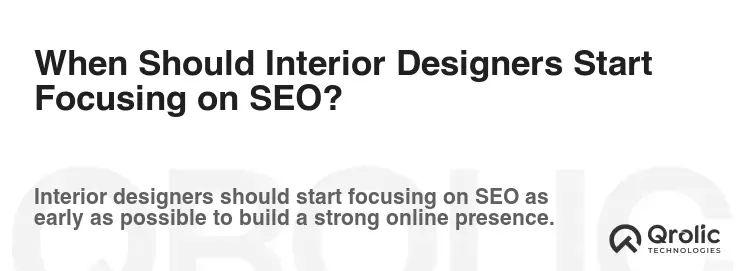
The answer is unequivocally: as early as possible. SEO is not a quick fix; it’s a marathon, not a sprint. The earlier you begin to optimize your website, the sooner you’ll start seeing results, and the more time you’ll have to build authority and trust with search engines.
- During Website Development: Ideally, SEO considerations should be integrated from the very beginning of your website’s design and development phase. Choosing an SEO-friendly platform, structuring your site logically, and planning your content around target keywords can save immense effort later.
- As an Ongoing Process: SEO is not a one-time task. Search engine algorithms evolve constantly, competitor strategies change, and your business goals grow. Therefore, interior designer website SEO must be an ongoing commitment, involving regular monitoring, adjustments, content updates, and continuous optimization.
- Before a Major Project Launch: If you’re launching a new service, targeting a new geographic area, or showcasing a significant portfolio, it’s crucial to integrate SEO strategies to maximize its exposure from day one.
The Evolving Landscape of Search Engines: Staying Ahead

Google, with its relentless pursuit of providing the best user experience, continually refines its algorithms. What worked for interior designer website SEO five years ago might be less effective today. Key trends include a stronger emphasis on user experience (UX), mobile-friendliness, E-A-T (Expertise, Authoritativeness, Trustworthiness), and semantic search (understanding intent beyond exact keywords). Staying informed about these shifts and adapting your strategy accordingly is vital for sustained first-page rankings.
Laying the Digital Blueprint: Essential On-Page SEO for Interior Designers
Just as a physical blueprint guides the construction of a beautiful home, a well-defined on-page SEO strategy forms the structural integrity of your online presence. On-page SEO refers to all the optimization efforts you make directly on your website to help search engines understand your content and rank it appropriately. For interior designer website SEO, this means meticulously crafting every element to reflect your expertise and appeal to your target audience.
Keywords are Your Design Palette: Researching What Your Clients Search For
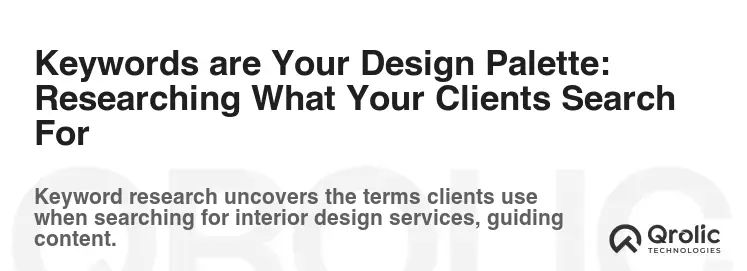
Before you can optimize, you need to know what your potential clients are typing into Google. Keyword research is the bedrock of any successful SEO strategy, guiding your content creation and on-page optimization efforts.
Understanding User Intent: Navigational, Informational, Transactional, Commercial Investigation
Not all searches are created equal. Understanding the intent behind a search query allows you to tailor your content precisely:
- Navigational: The user wants to go to a specific website (e.g., “Houzz login”). Less relevant for direct client acquisition.
- Informational: The user is seeking information (e.g., “modern kitchen design ideas,” “how to choose an interior designer”). These are excellent opportunities for blog posts and guides that establish your authority.
- Commercial Investigation: The user is researching products or services before making a decision (e.g., “best interior designers New York,” “cost of interior design services”). These keywords are ideal for service pages, portfolio descriptions, and case studies.
- Transactional: The user is ready to make a purchase or hire a service (e.g., “hire interior designer Chicago,” “interior design consultation”). These are your high-value keywords, perfect for contact pages and service offerings.
For effective interior designer website SEO, you need a blend of informational and commercial investigation/transactional keywords.
Tools for Keyword Research
Several tools can help you uncover the terms your clients use:
- Google Keyword Planner: Free and integrated with Google Ads, it provides search volume and competition data.
- SEMrush / Ahrefs: Industry-leading comprehensive SEO tools offering deep insights into keyword difficulty, competitor analysis, and backlink profiles. (Paid, but invaluable).
- Ubersuggest / KWFinder: User-friendly tools that offer similar functionalities, often with free tiers for basic research.
- Google Search (Autosuggest & “People Also Ask”): Simply start typing your service into Google, and see what suggestions pop up. The “People Also Ask” section provides direct insights into related questions.
Long-Tail Keywords: Niche Gold for Interior Design
While broad terms like “interior designer” are highly competitive, long-tail keywords (phrases of three or more words) offer a fantastic opportunity for interior designer website SEO. They have lower search volume but often signify higher user intent and are easier to rank for.
- Examples: Instead of “kitchen design,” target “luxury modern kitchen designer Mumbai,” “small kitchen renovation ideas with island,” or “sustainable kitchen design services Sydney.”
- Why they work: People using long-tail keywords are usually further along in their decision-making process and know exactly what they want, making them prime leads.
Competitor Keyword Analysis
Analyze what keywords your successful competitors are ranking for. Tools like SEMrush can reveal their top-performing keywords, giving you valuable insights into potential gaps or opportunities for your own strategy.
Crafting Compelling Content: The Heart of Your Interior Design Website SEO

Content is king, especially for interior design. It’s how you communicate your style, expertise, and unique value proposition. Every piece of content on your site needs to be high-quality, relevant, and optimized with your target keywords.
Blog Posts: Your Storytelling Canvas
A blog is a powerful tool for attracting organic traffic through informational and commercial investigation keywords.
- How-to Guides: “How to choose the right paint colors for a north-facing room,” “DIY steps for styling your bookshelf like a pro.”
- Style Trends: “Top 5 interior design trends for 2024,” “Embracing Japandi style in your living room.”
- Behind-the-Scenes: “A day in the life of an interior designer,” “From concept to completion: Our design process.”
- Project Spotlights: Deep dives into your completed projects, showcasing your design philosophy and problem-solving skills.
- Keyword Integration: Naturally weave your target interior designer website SEO keywords and LSI (Latent Semantic Indexing) keywords (synonyms and related terms) throughout your blog posts. For example, if your primary keyword is “sustainable interior design,” use related terms like “eco-friendly decor,” “green living spaces,” “recycled materials,” etc.
- Readability: Break up text with headings, subheadings, bullet points, and short paragraphs. Use emotional language to evoke the feeling of beautiful spaces.
Service Pages: Clearly Defining Your Expertise
Each service you offer should have its own dedicated, keyword-optimized page.
- Examples: “Residential Interior Design [City],” “Commercial Space Planning,” “Virtual Interior Design Consultation,” “Home Staging Services.”
- Content: Detail what each service entails, your process, benefits for the client, and include relevant portfolio images.
- CTAs: Include clear calls-to-action (e.g., “Request a Quote,” “Book a Consultation”).
Portfolio Pages: Showcasing Your Masterpieces
Your portfolio is your design firm’s crown jewel. Optimize it for search engines without compromising its visual appeal.
- Image SEO: This is paramount for interior design. Use descriptive file names (e.g.,
modern-living-room-design-chicago.jpg), compelling alt text (e.g.,A luxurious modern living room design by [Your Firm Name] in Chicago, featuring a custom sofa and abstract art.), and compress images for faster loading. - Project Descriptions: Don’t just show, tell. Each project should have a detailed description outlining the client’s brief, your design challenges, solutions, and the overall outcome. Integrate relevant keywords naturally within these descriptions.
- Client Testimonials: Include short, impactful quotes from satisfied clients within project descriptions or on a dedicated testimonials page.
- Case Studies: Transform your portfolio entries into mini-case studies, detailing the “before and after,” highlighting specific design problems solved, and quantifying the value you brought.
About Us/Contact Pages: Building Connection and Trust
These pages, while not directly targeting commercial keywords, are crucial for E-A-T (Expertise, Authoritativeness, Trustworthiness) and conversions.
- About Us: Share your story, philosophy, team expertise, and unique selling proposition. Use keywords related to your design style or specialization.
- Contact Us: Ensure your NAP (Name, Address, Phone Number) information is consistent with your Google My Business profile. Embed a Google Map.
Optimizing Core Website Elements: Making Every Pixel Count
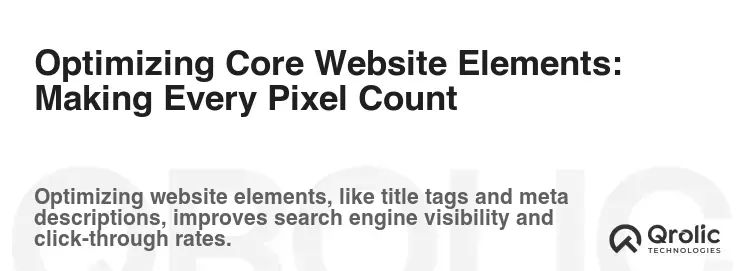
Beyond the content itself, various technical and structural elements on your pages play a significant role in interior designer website SEO.
Title Tags & Meta Descriptions: Your Digital Shop Window
These are the first things a user sees in search results. They need to be captivating and keyword-rich.
- Title Tag: The main headline of your search result.
- Best Practices: Keep it under 60 characters. Include your primary keyword early, followed by your brand name.
- Example:
Luxury Interior Designer | Modern Home Decor | [Your Firm Name]orResidential Interior Design Chicago | [Your Firm Name]
- Meta Description: The short paragraph below the title tag.
- Best Practices: Keep it under 160 characters. Write a compelling, concise summary of the page’s content, encouraging clicks. Include your keyword and a strong call-to-action if appropriate.
- Example:
Transform your home with award-winning luxury interior design services in Chicago. Specializing in modern residential spaces. Contact us today!
Header Tags (H1, H2, H3): Structuring Your Narrative
Header tags (<h1>, <h2>, <h3>, etc.) organize your content hierarchically, making it readable for both users and search engines.
<h1>: Your main topic, used once per page, containing your primary keyword. (Usually the page title itself).<h2>: Subtopics that support your<h1>.<h3>: Further breakdown of<h2>sections.- Benefit for SEO: Clearly signals to search engines the important themes and structure of your content.
Image Optimization: Beyond Just Beautiful Photos
Interior design is highly visual, making image SEO exceptionally important.
- File Names: Use descriptive, keyword-rich file names (e.g.,
modern-kitchen-design-sydney.jpginstead ofIMG_001.jpg). - Alt Text: This describes the image for visually impaired users and search engines. Include relevant keywords naturally. (e.g.,
A luxurious open-plan living room designed by [Your Firm Name], featuring a custom fireplace and panoramic city views.). - Compression: Large image files slow down your website. Compress images without sacrificing quality using tools like TinyPNG or through your CMS plugins.
- Image Dimensions: Serve images in the correct dimensions to avoid browser resizing.
- Lazy Loading: Implement lazy loading so images only load when they become visible in the user’s viewport, speeding up initial page load.
Internal Linking: Guiding Visitors Through Your Design Journey
Internal links connect pages within your own website.
- Benefit: Helps search engines understand the structure and hierarchy of your site, distributes “link equity” (SEO value) across pages, and keeps users engaged longer.
- Strategy: Link from blog posts to relevant service pages or portfolio entries. Link from your services to related blog posts for more information. Use descriptive anchor text (the clickable text) that includes relevant keywords.
External Linking: Building Credibility
Linking out to authoritative, relevant external websites (e.g., industry organizations, reputable design blogs, material suppliers) can enhance your own website’s credibility and provide additional value to your users. Ensure these links open in a new tab.
Call-to-Actions (CTAs): Turning Browsers into Clients
Every page on your website should have a clear purpose, often culminating in a CTA.
- Examples: “Schedule a Free Consultation,” “Download Our Style Guide,” “View Our Portfolio,” “Get a Custom Quote.”
- Placement: Prominently placed and easy to find, guiding potential clients to the next step in their journey with you.
Beyond the Walls of Your Website: Off-Page SEO Strategies for Interior Designers
While on-page optimization perfects your website’s internal appeal, off-page SEO extends your reach across the digital landscape, building your reputation and authority. For effective interior designer website SEO, off-page strategies are crucial for signaling to search engines that your site is trustworthy, popular, and a valuable resource within your industry.
Building Your Digital Reputation: The Power of Backlinks

Backlinks, or inbound links, are links from other websites to your own. Think of them as votes of confidence. The more high-quality, relevant backlinks your site has, the more authoritative and trustworthy search engines perceive it to be.
What are Backlinks and Why Do They Matter?
- Authority Transfer: When a reputable website links to yours, it passes a portion of its “link equity” (or “link juice”) to your site, boosting your domain authority.
- Discoverability: Backlinks help search engine crawlers discover new pages on your site.
- Referral Traffic: High-quality backlinks can also drive direct referral traffic from other websites, bringing new potential clients who are already engaged.
Strategies for Earning High-Quality Backlinks
Quality trumps quantity. A few authoritative links are far more valuable than many low-quality ones.
- Guest Posting: Offer to write informative, high-quality articles for other design blogs, lifestyle publications, or home improvement websites. In exchange, you get an author bio with a link back to your site.
- Tip: Target sites with good domain authority and a relevant audience to yours.
- Industry Partnerships and Collaborations:
- Manufacturers & Suppliers: If you frequently use products from specific manufacturers, ask if they feature designers who use their products. This could lead to a link on their “design professionals” or “project gallery” pages.
- Architects, Contractors, Real Estate Agents: Collaborate on projects and exchange links. If you complete a project for a client, and an architect or builder was also involved, they might feature the completed project on their site and link to you.
- Local Businesses: Partner with local furniture stores, art galleries, or home staging companies for cross-promotional efforts and link exchanges.
- Resource Pages: Many websites curate lists of useful resources for their audience. Identify relevant resource pages (e.g., “best interior design blogs,” “local design firms”) and politely request to be included.
- Broken Link Building: Find broken links on authoritative websites in your niche. Create content that replaces the broken link’s topic, then suggest they replace the broken link with yours.
- Public Relations (PR) & Media Mentions: If your design firm or projects are featured in local or national publications (online magazines, news sites), ensure they link back to your website. This is incredibly powerful for interior designer website SEO.
- Unlinked Mentions: Use tools like Google Alerts or Mention to find online mentions of your firm or name that aren’t linked. Reach out and politely request a link.
- Content Marketing Excellence: Create truly exceptional, shareable content (e.g., in-depth design guides, stunning visual case studies, unique trend reports). If your content is genuinely valuable, other sites will naturally want to link to it.
Disavowing Bad Links
Just as good links help, bad links (from spammy, irrelevant, or low-quality sites) can harm your interior designer website SEO. Use Google Search Console’s Disavow Tool to tell Google to ignore these harmful links. Regularly audit your backlink profile.
Local SEO for Interior Designers: Dominating Your Geographical Area
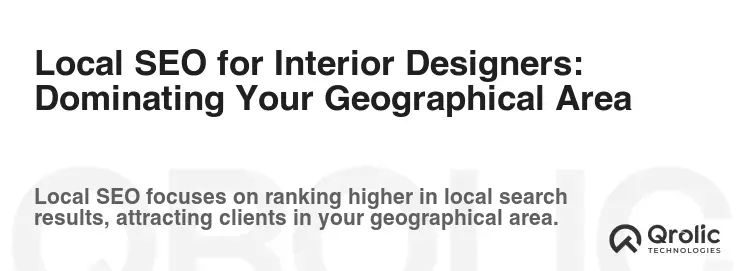
For interior designers, a significant portion of clientele comes from local searches. Optimizing for local SEO is paramount for capturing clients in your service areas.
Google My Business (GMB): Your Local Hub
Your GMB profile is arguably the most critical local SEO tool. It controls how your business appears in Google Maps and the local pack (the map results below the ads).
- Optimization Tips:
- Claim and Verify: Ensure your GMB profile is claimed and verified.
- Complete All Sections: Fill out every section comprehensively: business name, address, phone number (NAP), website, hours, services, photos, etc.
- Accurate NAP: Ensure your business name, address, and phone number are absolutely consistent across your GMB, website, and all online directories. Inconsistencies confuse search engines.
- High-Quality Photos: Upload numerous high-resolution photos of your projects, office, team, and even behind-the-scenes. Visuals are key for interior design.
- Service Areas: Clearly define your service areas.
- GMB Posts: Use GMB posts to share updates, promotions, new projects, or blog articles. These provide fresh content signals.
- Product/Services Section: Detail your specific interior design services.
- Q&A Section: Proactively answer common questions your clients might have.
- Reviews Management: Actively solicit client reviews on GMB and respond to all reviews, positive or negative, professionally and promptly. This is a huge ranking factor and builds immense trust.
Local Citations: Consistency is Key
Citations are mentions of your business’s NAP on other websites, even without a direct link. They act as trust signals for local SEO.
- Strategy: List your business on prominent online directories relevant to your industry and location (e.g., Yelp, Houzz, Angi, Yellow Pages, local chambers of commerce, design-specific directories).
- Consistency: Again, ensure your NAP is perfectly consistent across all these listings.
Local Keywords
Integrate location-specific keywords throughout your website content, especially on service pages and in blog posts.
- Examples: “Interior designer near me,” “residential interior design [city],” “best kitchen remodeler [neighborhood],” “commercial interior design [state].”
Social Media Signals: Amplifying Your Design Voice

While social media direct likes/shares aren’t direct ranking factors for interior designer website SEO, they contribute indirectly in several powerful ways:
- Increased Visibility & Traffic: Social media platforms, especially visual ones like Pinterest and Instagram, are natural habitats for interior designers. Sharing your work here drives referral traffic back to your website, increasing engagement metrics that Google does consider.
- Brand Building & Authority: A strong, active social media presence builds brand recognition and establishes your firm as an authority, leading to more searches for your brand name (a powerful SEO signal).
- Content Distribution: Social media is an excellent channel to distribute your blog posts, project updates, and new service offerings, increasing their reach and potential for backlinks.
- Engagement: Comments, shares, and saves signal to both humans and search engines that your content is valuable and resonating.
- Pinterest: A visual search engine in itself, Pinterest is incredibly important for interior designers. Optimize your pins with keywords, link directly to relevant pages on your site, and build boards that reflect your design style.
Online Reviews and Testimonials: Social Proof That Sells

Reviews are potent social proof and a critical component of local SEO. They influence not only your search rankings but also the conversion rate of potential clients.
Encouraging Reviews
- Ask Directly: Don’t be shy! After a successful project, politely ask satisfied clients for a review on Google, Houzz, Yelp, or your preferred platforms.
- Provide Easy Links: Make it simple for clients to leave a review by providing direct links to your review profiles via email or your website.
- Integrate into Process: Make review requests a standard part of your project closing process.
Responding to Reviews
- All Reviews: Respond to all reviews, positive or negative. For positive reviews, thank the client and reiterate your commitment to quality.
- Negative Reviews: Address negative reviews professionally, empathetically, and constructively. Offer to resolve issues offline. This demonstrates excellent customer service and builds trust.
The Technical Blueprint: Ensuring Your Interior Design Website SEO is Rock Solid
Beyond compelling content and robust backlinks, the technical health of your website forms the invisible backbone of your interior designer website SEO. A technically sound site is easy for search engine crawlers to access, understand, and index, ensuring your beautiful designs are seen by the right audience. Ignoring these technical aspects is like designing a stunning house but forgetting to install proper plumbing or electricity – it looks good, but it won’t function effectively.
Website Speed and Performance: A Seamless Experience
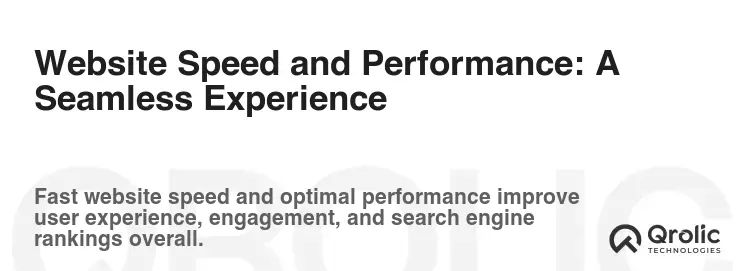
In today’s fast-paced digital world, users expect websites to load almost instantly. Google prioritizes fast-loading websites, making speed a critical ranking factor.
Why Speed Matters
- User Experience (UX): A slow website frustrates users, leading to high bounce rates (people leaving your site quickly). This directly impacts lead generation for interior designers.
- Ranking Factor: Google explicitly uses page speed as a ranking signal, especially for mobile searches.
- Crawl Budget: Faster sites allow search engine crawlers to index more pages within a given “crawl budget,” ensuring your entire portfolio is discovered.
Tools to Check Speed
- Google PageSpeed Insights: Provides a detailed report on your page’s performance for both mobile and desktop, along with actionable recommendations.
- GTmetrix / Pingdom Tools: Offer in-depth analyses of your site’s loading time, identifying bottlenecks.
Optimization Techniques
- Image Compression: As discussed, this is paramount for image-heavy interior design websites. Use modern formats like WebP where possible.
- Browser Caching: Stores parts of your website on a user’s browser, speeding up subsequent visits.
- Minification: Compresses HTML, CSS, and JavaScript files by removing unnecessary characters and spaces.
- Content Delivery Network (CDN): Distributes your website’s content across multiple servers worldwide, delivering it to users from the closest server, reducing load times.
- Optimized Hosting: Invest in reliable, fast web hosting. Shared hosting might be cheap but can be slow.
- Reduce Server Response Time: This might involve optimizing database queries or upgrading server hardware.
Mobile-Friendliness: Designing for Every Screen
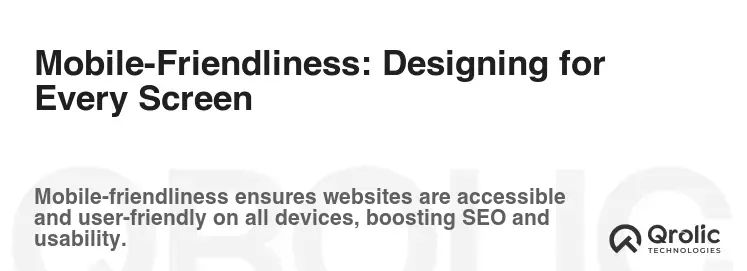
A significant portion of web traffic now comes from mobile devices. Google operates on a “mobile-first indexing” principle, meaning it primarily uses the mobile version of your website for ranking and indexing.
Responsive Design: A Must-Have
Your interior design website must be built with responsive design, meaning it automatically adjusts its layout and content to fit any screen size, from desktops to tablets and smartphones. This ensures a consistent and enjoyable user experience across all devices.
Mobile-First Indexing
Ensure that all your important content, images, and structured data are present and accessible on your mobile site, not just your desktop version. Any content hidden on mobile might not be indexed.
Website Architecture and Navigation: Intuitive Pathways
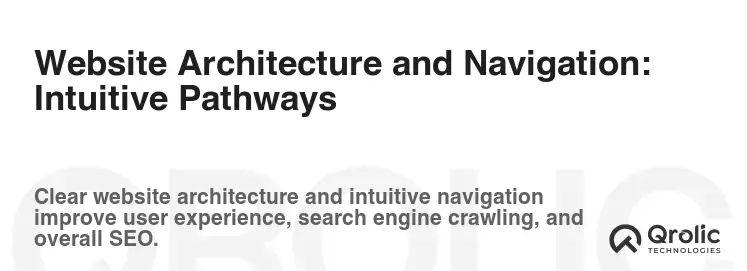
A logical and intuitive website structure benefits both users and search engines.
- Sitemap XML: Your Website’s Map for Search Engines
- An XML sitemap lists all the important pages on your website, guiding search engine crawlers to find and index your content efficiently.
- Action: Generate an XML sitemap (most CMS platforms do this automatically) and submit it to Google Search Console.
- Robots.txt: Guiding the Crawlers
- The robots.txt file tells search engine bots which parts of your site they can or cannot crawl.
- Action: Ensure it’s correctly configured to allow crawlers access to all public pages you want indexed, while blocking unnecessary ones (e.g., admin pages).
- URL Structure: Clean and Descriptive
- Your URLs should be clean, short, and descriptive, including relevant keywords.
- Bad Example:
yourfirm.com/?p=123 - Good Example:
yourfirm.com/portfolio/modern-kitchen-design-los-angeles - Benefit: Helps users understand the page content before clicking and provides another small SEO signal.
SSL Certificate (HTTPS): Security and Trust

An SSL certificate encrypts the data exchanged between your website and your users, indicated by “HTTPS” in the URL and a padlock icon.
- Ranking Factor: Google uses HTTPS as a minor ranking signal.
- Trust: It builds trust with users, indicating your site is secure, especially crucial for contact forms or payment processing.
- Action: Ensure your interior design website has an active SSL certificate. Most hosting providers offer free SSL certificates (e.g., Let’s Encrypt).
Schema Markup: Speaking Google’s Language
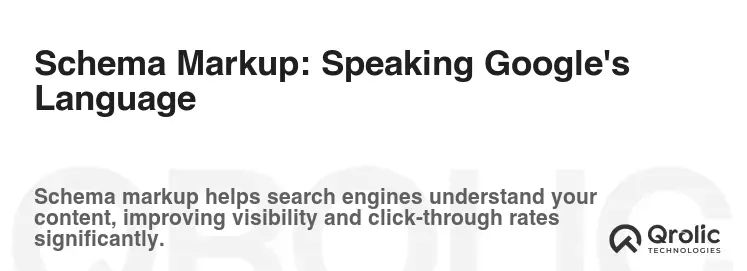
Schema markup is a form of microdata that you can add to your HTML to help search engines understand the content of your pages more deeply. It helps your website achieve “rich snippets” in search results, making them stand out.
Why Schema is Important for Interior Designers
- Enhanced Visibility: Rich snippets (e.g., star ratings, images, specific business details) make your search results more attractive and clickable.
- Better Understanding: It helps Google understand that you are an “Interior Designer” business, where you are located, what services you offer, and who your team is.
How to Implement Schema
- LocalBusiness Schema: Crucial for interior designer website SEO. Provides Google with your business name, address, phone number, website, opening hours, and services.
- Service Schema: Details specific services you offer (e.g., “Residential Interior Design,” “Commercial Space Planning”).
- Project/Portfolio Schema: Can be used to mark up individual project pages, detailing the type of project, client, location, and even reviews related to that project.
- Review Schema: If you display client testimonials with star ratings on your site, schema can tell Google to display those stars in the search results.
- Implementation: You can add schema manually by editing your HTML, or use plugins (for CMS like wordpress) or schema markup generators. Test your implementation using Google’s Rich Results Test tool.
Measuring Success and Iterating: The Ongoing Journey of Interior Designer Website SEO
Launching an SEO strategy is just the beginning. The truly powerful aspect of interior designer website SEO lies in its continuous measurement, analysis, and adaptation. Without tracking your progress, you’re essentially designing in the dark, unable to discern what’s working, what needs refinement, or where new opportunities lie.
Tracking Your Progress: Essential Tools
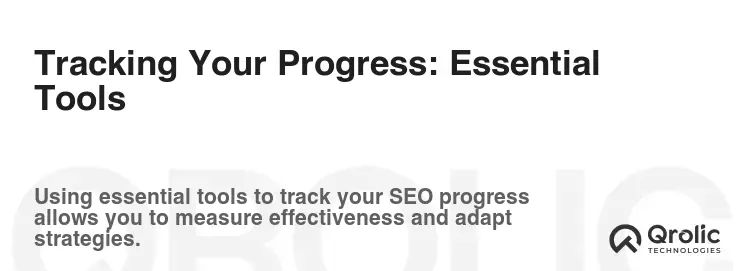
These tools provide the insights you need to monitor your performance and make informed decisions.
Google Analytics: Understanding User Behavior
Google Analytics is an indispensable free tool that tracks website traffic and user behavior.
- What it tells you:
- Organic Traffic: How many visitors are coming from search engines? Which pages are they landing on?
- Bounce Rate: How many visitors leave your site after viewing only one page? A high bounce rate might indicate poor content, slow speed, or irrelevant traffic.
- Time on Page/Session Duration: How long do users spend on your pages? Longer durations suggest engaging content.
- Conversion Goals: Track how many visitors complete desired actions, such as filling out a contact form, downloading a brochure, or calling your office.
- User Demographics: Understand who your visitors are (location, age, interests), which can further refine your target audience.
- Action: Set up Google Analytics on your website and regularly review reports to understand how users interact with your content.
Google Search Console: Insights from Google Itself
Google Search Console (GSC) is another free and vital tool that provides direct communication from Google about your site’s performance in search.
- What it tells you:
- Search Performance: What keywords are people searching for to find your site? Which pages are appearing in search results, and what are their click-through rates (CTR) and average positions?
- Indexing Status: Are all your important pages indexed by Google? Are there any errors preventing indexing?
- Core Web Vitals: Performance metrics related to loading, interactivity, and visual stability (critical for UX and ranking).
- Security Issues: Alerts you to any security vulnerabilities.
- Backlinks: Shows you which sites are linking to yours.
- Mobile Usability: Reports on any issues with your mobile-friendly design.
- Action: Connect your website to GSC, submit your sitemap, and regularly check for performance reports and any flagged issues. This is where Google tells you exactly what it thinks of your interior designer website SEO.
Rank Tracking Tools
While GSC shows average position, dedicated rank tracking tools (e.g., SEMrush, Ahrefs, SERPWatcher) allow you to monitor the specific search position of your target keywords over time, often for multiple locations.
- Action: Select a list of your most important keywords and track their performance weekly or monthly to see how your SEO efforts are impacting rankings.
Key Performance Indicators (KPIs) for Interior Designers
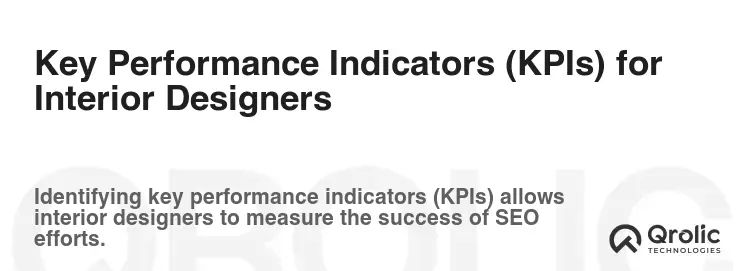
To truly understand the success of your interior designer website SEO efforts, focus on these measurable metrics:
- Organic Traffic Growth: Are more people finding your site through unpaid search? This is a primary indicator of SEO success.
- Keyword Rankings: Are your target keywords moving up the search results pages, ideally into the top 10?
- Lead Conversions: How many website visitors are actually turning into inquiries or booked consultations? This is the ultimate measure of ROI for most interior design firms.
- Bounce Rate & Time on Page: Are users engaged with your content once they arrive? Improved engagement often correlates with better rankings.
- Domain Authority/Page Authority: While not Google metrics, these third-party scores (from tools like Moz or Ahrefs) indicate the overall strength and authority of your website, often correlating with ranking potential.
- Local Pack Rankings: For local searches, are you appearing in the top 3 results on Google Maps?
The Iterative Process: Adapting and Evolving

SEO is not a “set it and forget it” task. The digital landscape, algorithms, and competitor strategies are constantly shifting.
- Regular Audits: Conduct comprehensive SEO audits of your website at least once a year (or more frequently if you notice significant shifts) to identify new opportunities and address emerging issues.
- Content Updates: Regularly update existing content, refresh statistics, add new images, and expand on topics to keep it fresh and relevant. Google favors up-to-date content.
- Stay Informed: Keep abreast of the latest SEO news, algorithm updates, and industry best practices. Follow reputable SEO blogs and participate in online communities.
- Experiment and Learn: Don’t be afraid to test new strategies, track the results, and refine your approach based on what you learn. Every website is unique, and what works for one might need adjustment for another.
By embracing this continuous cycle of optimization, measurement, and adaptation, your interior designer website SEO will not only achieve first-page rankings but sustain them, ensuring a steady stream of dream clients for your design firm.
Qrolic Technologies: Your Partner in Digital Design Dominance
Navigating the intricate world of interior designer website SEO can be a daunting task, especially when your passion lies in transforming spaces, not deciphering algorithms. This is where Qrolic Technologies steps in – a dedicated partner committed to elevating your online presence and ensuring your exquisite designs reach the audience they deserve.
Who is Qrolic?
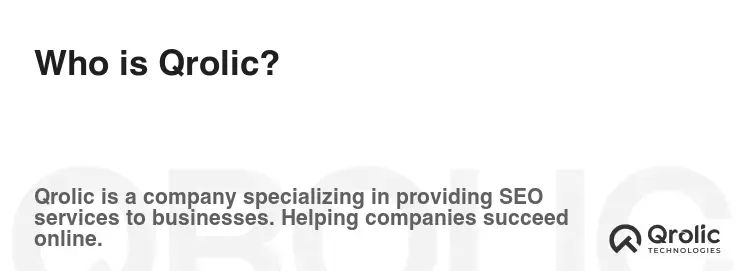
Qrolic Technologies is a leading digital marketing and Web Development agency with a profound understanding of how businesses thrive in the online realm. With a team of seasoned SEO specialists, content strategists, web developers, and digital marketing experts, Qrolic has a proven track record of delivering measurable results across diverse industries. We combine technical prowess with creative insight, understanding that for interior designers, aesthetics and functionality must go hand-in-hand in the digital space. Our expertise isn’t just about keywords; it’s about connecting your unique vision with clients who are actively seeking it.
How Qrolic Helps Interior Designers Rank Higher
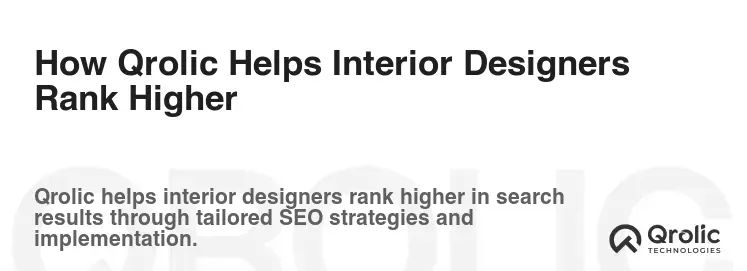
Qrolic Technologies offers a holistic approach to interior designer website SEO, meticulously addressing every facet of online optimization to ensure your firm dominates search engine results.
- Tailored Strategies: We don’t believe in one-size-fits-all solutions. Qrolic conducts in-depth analysis of your specific niche, target audience, local market, and competitor landscape to craft a customized SEO strategy that aligns perfectly with your business goals and design philosophy. This includes meticulous keyword research, identifying both high-volume and lucrative long-tail keywords that your ideal clients are using.
- Technical Expertise: Our team delves deep into the technical health of your website, ensuring it’s not only beautiful but also flawlessly structured for search engine crawlers. This covers everything from website speed optimization, mobile-friendliness, secure HTTPS implementation, clean URL structures, XML sitemaps, and robots.txt configuration, to advanced schema markup that helps your projects stand out with rich snippets. We fix the hidden issues that often hinder rankings.
- Compelling Content Creation: Qrolic understands that for interior designers, content is both visual and textual. We assist in developing engaging blog posts, detailed service pages, and optimized portfolio descriptions that articulate your design process, showcase your finished projects, and integrate your target keywords naturally. Our writers craft compelling narratives that resonate with your audience and establish your firm as an industry authority.
- Robust Off-Page SEO & Local Dominance: We strategically build your online authority through high-quality backlink acquisition strategies, including targeted guest posting, industry collaborations, and outreach. Crucially, we master local SEO, meticulously optimizing your Google My Business profile, managing local citations, and implementing review generation strategies to ensure you are the top choice for clients searching for interior designers in your specific geographic areas.
- Measurable Results & Transparent Reporting: Qrolic prides itself on data-driven decision-making. We provide clear, comprehensive monthly reports detailing your keyword rankings, organic traffic growth, lead conversions, and other key performance indicators. You’ll always know the tangible impact of our SEO efforts on your bottom line. We use tools like Google Analytics and Google Search Console to track and prove our success.
Why Choose Qrolic?
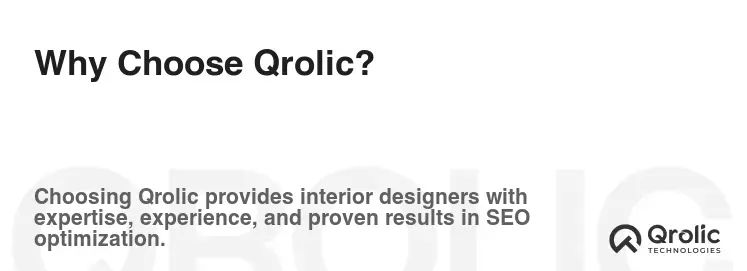
- Experience & Dedication: With years of experience in the digital marketing landscape, Qrolic’s team brings unparalleled expertise and a steadfast dedication to your success. We understand the nuances of the interior design industry and tailor our approach accordingly.
- Proven Track Record: Our portfolio speaks for itself, showcasing numerous clients who have achieved first-page rankings and significant business growth through our strategies. We don’t just promise results; we deliver them.
- Holistic Approach: We believe in an integrated strategy. Your SEO isn’t an isolated effort but a synchronized part of your broader digital marketing presence, ensuring all elements work in harmony to elevate your brand.
- Client-Centric Partnership: Qrolic acts as an extension of your team. We prioritize clear communication, proactive problem-solving, and a deep understanding of your unique business objectives. Your success is our success.
- Cutting-Edge Techniques: The SEO world is dynamic. Qrolic stays at the forefront of algorithm updates and emerging trends, ensuring your strategy is always future-proofed and highly effective.
Services Offered Relevant to Interior Design SEO

- Comprehensive SEO Audits: A deep dive into your current website’s performance and areas for improvement.
- Keyword Research & Strategy: Identifying the most lucrative keywords for your firm.
- On-Page Optimization: Enhancing all elements directly on your website.
- Technical SEO: Ensuring your website’s structural integrity for search engines.
- Local SEO & GMB Optimization: Dominating local search results.
- Content Marketing & Creation: Developing engaging, SEO-friendly content.
- Link Building & Authority Building: Earning high-quality backlinks.
- Performance Tracking & Reporting: Transparent measurement of your ROI.
By partnering with Qrolic Technologies (https://qrolic.com/), interior designers can confidently focus on their passion for creating beautiful spaces, knowing that their online visibility is in expert hands, driving consistent organic growth and positioning them as leaders in their industry.
Future-Proofing Your Interior Designer Website SEO: Trends to Watch
The digital landscape is ever-evolving, and staying ahead requires not just reacting to current trends but anticipating future shifts. For your interior designer website SEO to remain dominant, keeping an eye on emerging technologies and user behaviors is paramount.
Voice Search Optimization

The rise of smart speakers and voice assistants (Siri, Google Assistant, Alexa) means more people are searching using natural language queries.
- What it means for SEO: Voice searches tend to be longer, more conversational, and question-based (e.g., “Hey Google, find a luxury interior designer near me” or “What are the best modern living room ideas for small spaces?”).
- Action for Interior Designers:
- Focus on Long-Tail Keywords: Optimize your content for question-based, conversational long-tail keywords.
- Featured Snippets (Position Zero): Strive to answer common questions concisely and directly in your content to earn featured snippets, which are often read aloud by voice assistants.
- Natural Language: Write in a natural, conversational tone that mimics how people speak.
- Local SEO is Key: Voice search is heavily localized. Ensure your GMB is fully optimized.
Visual Search and AI

For a highly visual industry like interior design, the advent of visual search (e.g., Google Lens, Pinterest Lens) and AI is a game-changer. Users can now snap a picture of a furniture piece or a room and search for similar items or designers.
- What it means for SEO: Images become direct search queries.
- Action for Interior Designers:
- Exceptional Image Optimization: This becomes even more critical. Use highly descriptive alt text, clear file names, and structured data for images.
- High-Quality, Unique Imagery: Invest in professional photography. Unique, original images are more likely to be featured.
- Product/Image Schema: Implement schema markup that accurately describes the objects and styles within your images, making them discoverable by visual search engines.
- Pinterest Strategy: Double down on Pinterest, ensuring every pin links to relevant, optimized content on your website.
User Experience (UX) as a Core Ranking Factor
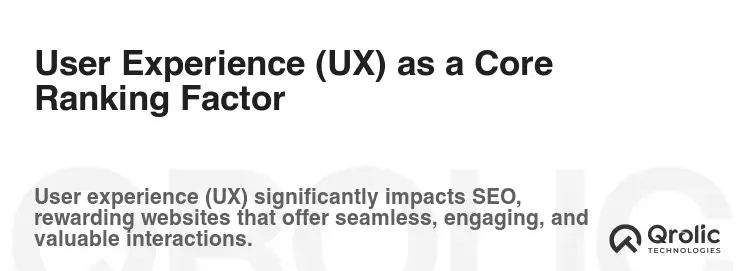
Google’s “Core Web Vitals” initiative firmly established user experience as a critical ranking factor. A positive user experience means users can easily find what they’re looking for, the site loads quickly, and it’s pleasant to interact with.
- What it means for SEO: A beautiful website that’s frustrating to use will be penalized.
- Action for Interior Designers:
- Focus on Core Web Vitals: Optimize for Largest Contentful Paint (LCP), First Input Delay (FID), and Cumulative Layout Shift (CLS).
- Intuitive Navigation: Ensure your website’s menu structure is clear, logical, and easy to use on all devices.
- Readability: Use legible fonts, appropriate line spacing, and break up text into digestible chunks.
- Accessibility: Ensure your site is accessible to users with disabilities (e.g., proper contrast, keyboard navigation).
E-A-T (Expertise, Authoritativeness, Trustworthiness) in Interior Design

Google increasingly emphasizes E-A-T, especially for “Your Money Your Life” (YMYL) topics, which, while not directly medical or financial, involve significant decisions and investments (like hiring an interior designer for a home renovation).
- What it means for SEO: Google wants to show results from highly qualified and reputable sources.
- Action for Interior Designers:
- Showcase Credentials: Prominently display your team’s qualifications, certifications, awards, and years of experience.
- Build Your Brand: Develop a strong brand identity and voice that resonates with authority and professionalism.
- Thought Leadership: Consistently publish high-quality, insightful blog posts and case studies that demonstrate your expertise.
- Generate Reviews & Testimonials: Accumulate genuine client reviews on platforms like Google My Business, Houzz, and Yelp.
- Press Mentions & Backlinks: Secure mentions and links from reputable industry publications, design blogs, and news outlets.
- Clear Contact Information: Make it easy for clients to contact you and verify your legitimacy.
By proactively incorporating these future trends into your interior designer website SEO strategy, you’ll not only stay relevant but continue to lead the charge, ensuring your firm’s visibility and growth for years to come.
